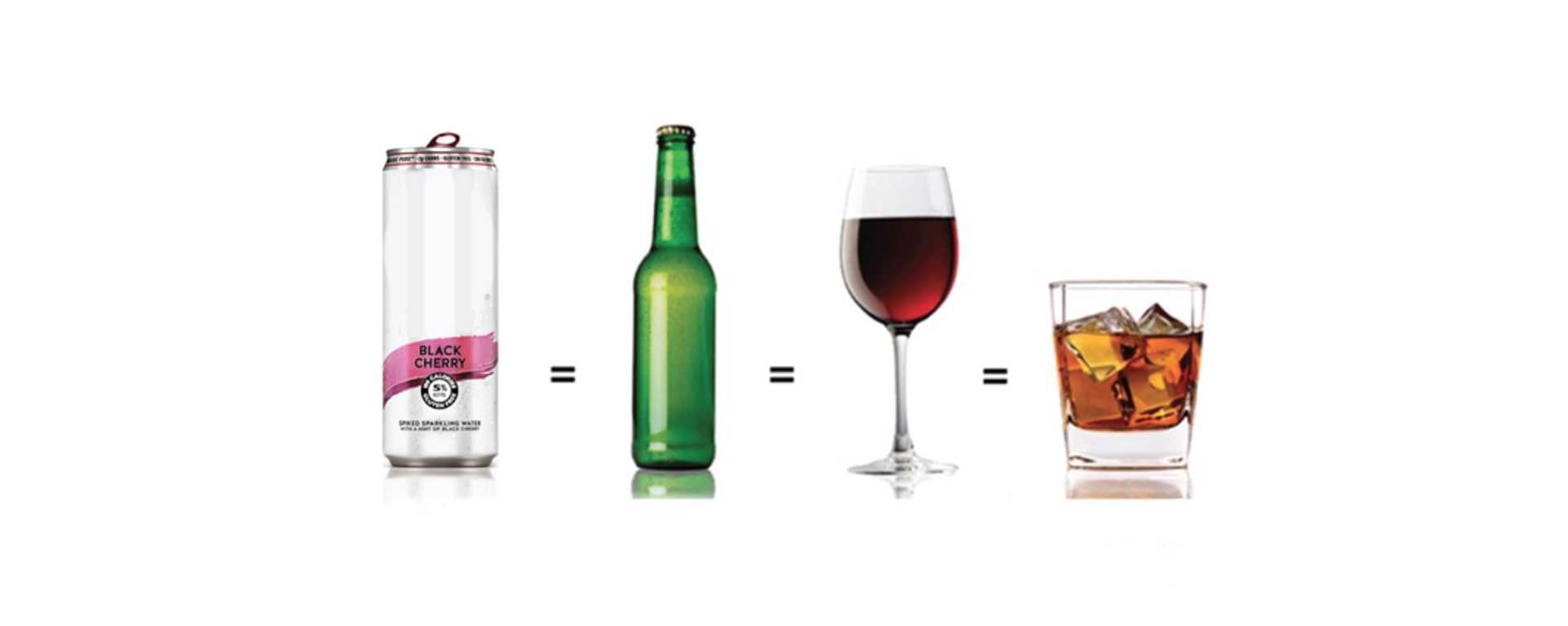
Achieving life-long wellbeing
Our community is committed to encouraging and supporting our students in making healthy and responsible choices around alcohol and drug use. Our goal is to provide a range of evidence-based services that equip Washburn students with the knowledge and skills to achieve life-long wellbeing.Drinking Responsibly
If you chose to drink alcohol, it is important to know how to drink responsibly. Although it is illegal for anyone under the age of 21 to consume alcohol, many minors will still choose to do so. It is our goal is to inform and educate all students, regardless of age, on responsible alcohol use to reduce negative consequences.
If you choose not to drink alcohol, this information is still valuable as your peers may choose to drink and you need to be prepared.
To learn more information about what it means to drink responsibly check out the resources and tools at responsibility.org.

Hard seltzer, beer, wine, and hard liquor (distilled spirits) all contain alcohol. The following common alcoholic drinks contain equal amounts of alcohol by volume (ABV) and are considered one (1) standard drink:
- One 12 fl oz hard seltzer equals about 5% ABV
- One mixed drink containing 1.5 fl oz (44 mL) of 80-proof hard liquor, such as gin, whiskey, or rum equals about 40% ABV
- One 4-5 fl oz (148 mL) glass of wine equals about 13% ABV
- One 12 fl oz (355 mL) bottle of beer or wine cooler equals about 5% ABV
Proof is the amount of alcohol in hard liquor or distilled spirits. The percentage of pure alcohol in the hard liquor is usually one-half the proof. For example, a 100-proof liquor is about 50% pure alcohol. Thus, the higher the proof, the more pure alcohol the hard liquor contains.
Binge drinking is a pattern of excessive alcohol use that increases a person's blood alcohol content very rapidly. For men, binge drinking is defined as 5 or more drinks in a row and for women, 4 or more drinks in a row.
Binge drinking is associated with many health problems, including but not limited to:
- Unintentional injuries (e.g., car crashes, falls, burns, drowning)
- Intentional injuries (e.g., firearm injuries, sexual assault, domestic violence)
- Alcohol poisoning
- Sexually transmitted diseases
- Unintended pregnancy
- Sexual dysfunction
- High blood pressure, stroke, and other cardiovascular diseases
- Liver disease
- Neurological damage
The definition of blood alcohol content is the concentration of alcohol in one's bloodstream, expressed as a percentage. Blood alcohol content, or BAC, is used to determine whether a person is legally intoxicated, especially in operating or attempting to operate a motor vehicle.
In Kansas, it is illegal to operate or attempt to operate a motor vehicle while having a BAC of .08% or above. If you are under 21 years of age, the Zero Tolerance Law makes it illegal to operate or attempt to operate a motor vehicle with a BAC of .02 or above.
There are many factors that can affect a person's BAC:
- Alcohol content of drinks consumed
- Period of time drinks are consumed
- Gender
- Weight
- Personal Health
- Food Consumption
- Medication
Alcohol poisoning is a serious — and sometimes deadly — consequence of consuming large amounts of alcohol in a short period of time. Drinking too much too quickly can affect your breathing, heart rate and gag reflex and potentially lead to coma and death.
Signs of Alcohol Poisoning:
- Unconscious or passed out and cannot be awakened
- Vomiting
- Seizures
- Irregular, slow breathing (8 breaths or less per minute)
- Cold, clammy, pale or bluish skin
If you or your friends are experiencing any of these symptoms while intoxicated, seek immediate help.
What to Do:
- Call 911
- Stay with your friend until help arrives
- Turn your friend on his or her side
- Monitor breathing closely
Hesitating to act can mean the difference between life and death.
What NOT to Do:
- Leave your friend alone
- Let your friend "sleep it off"
- Allow your friend to drive
- Give your friend food, liquid, medication or drugs
- Encourage your friend to walk, run or exercise
- Put your friend in a cold shower
You are ALWAYS doing the right thing by getting help.
The only way to become sober is time. Eating, drinking coffee or energizer drinks, sleeping, taking a cold shower – none of these things will help you become sober. For every drink a person consumes, he or she must let an hour pass without taking in any more alcohol before being sober. It is true that drinking water will help with dehydration and dehydration is a major cause of hangovers but drinking water will not sober you up.
While alcohol is the most commonly used and widely abused drug in the world, other drug use, such as marijuana, is prevalent among college students. There is also a growing trend of misusing prescription medications. Use, misuse, and abuse of these drugs and any other illicit drugs can can lead to serious tragedies, including addiction, violence, sexual assault and rape, hospitalization for overdoses, and premature death.
Here is a list of resources pertaining to drug use, misuse, and abuse:
Foundation for a Drug Free World
National Institute on Drug Abuse - Marijuana: Facts Parents Need to Know
Mind Matters: The Body’s Response to Marijuana
Alcohol & Drug Resources and Tools
- 60 Digital Resources for Addressing Substance Use Disorders, Addiction and Recovery
- Alcohol Screening
- BAC Calculator
- Cocktail Calculator
- College Drinking - Changing the Culture
- Fall Semester - A Time for Parents to Discuss the Risks of College Drinking
- Gordie's Call - A National Campaign to Prevent Alcohol Abuse and Hazing
- Innerbody Research - College Binge Drinking
- National Association for Children of Alcoholics
- National Institute on Drug Abuse
- Rethinking Drinking
- Substance Abuse and Mental Health Services Administration
- Virtual Bar
Alternatives to Drinking
GET IN TOUCH WITH the SRWC
Regular Semester Hours
Monday-Thursday: 6 a.m. - 11 p.m.
Friday: 6 a.m. - 9 p.m.
Saturday: 9 a.m. - 9 p.m.
Sunday: Noon - 9 p.m.
See holiday and break hours
Phone & Email
785.670.1314
recreation@washburn.edu

